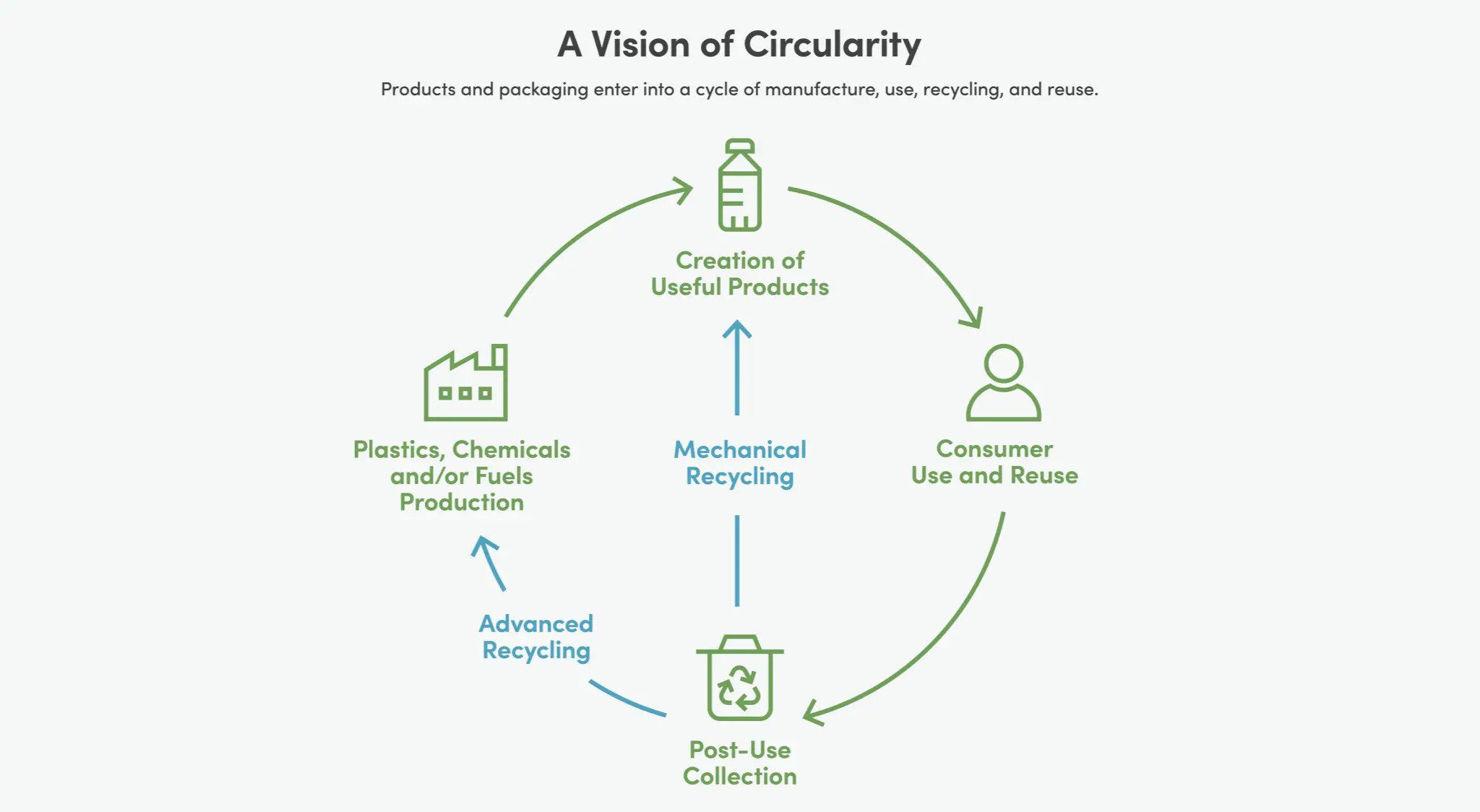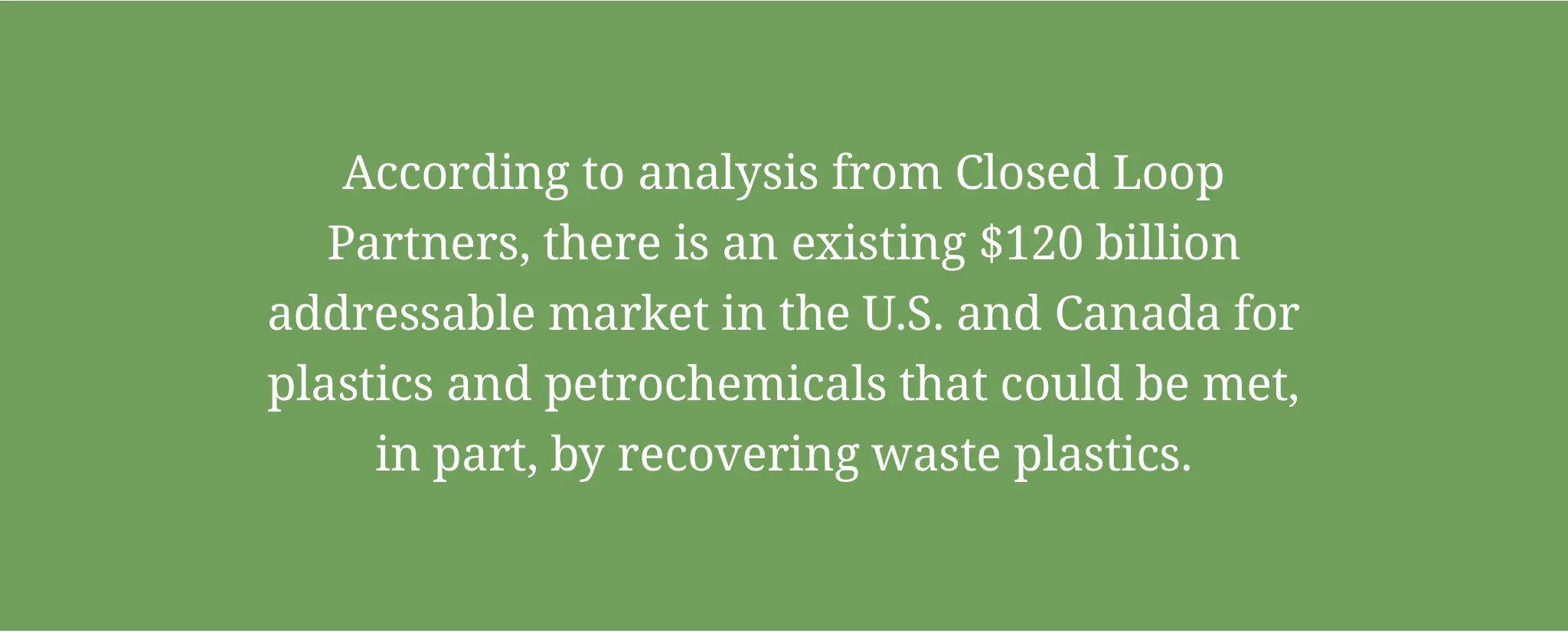We use plastic every day. It’s in the cars we drive and the clothes we wear. It protects the lunches we pack. We play on it at the playground, and it’s a big part of our visits to the doctor. Plastic makes our world safer, more efficient and more affordable. But too often, plastic items like packaging, milk jugs and drink bottles are discarded instead of being recycled back into the manufacturing process to become something useful.
Plastic doesn’t have to be — and shouldn’t be — single-use. Innovative technologies now exist to reuse plastic, thereby allowing us to use our resources more efficiently.
What is a circular economy?
A circular economy is an economic system that creates goods by looking at the entire lifecycle of a product, designing it to be reused rather than discarded and conserving resources through reuse or recycling. Of course, a circular economy can and should include many industries and resources, not just plastic.
Circularity in your life
Circularity is the ability to more efficiently use plastic (or any resource) by keeping material in use for as long as possible, getting the most we can from them during use, and then recovering them to make new products. This gives a product a circular life, greatly reducing the likelihood that it will become waste and keeping it out of the environment.
While mechanical — or traditional — recycling that we already have is key to achieving a circular economy, we can’t achieve plastics circularity through mechanical recycling alone. Mechanical recycling complements new advanced recycling technologies that break down plastic into raw materials. These raw materials are then repurposed to make multiple products, such as new plastics, crayon wax, windshield washer fluid or lubricants for cars and transportation fuels. (To learn more about advanced recycling innovations and technologies, read here.)

Turning the vision of circularity into reality
A circular economy and circularity are new concepts to many people. But much work is underway to foster a circular economy for plastics, which will require significant advances in efficient recycling infrastructure and technologies to economically collect and process used plastic. Fortunately, there is great demand for the products of mechanical and advanced plastic recycling.

Source: Accelerating Circular Supply Chains For Plastics
For example, Shell Chemical LP — a partner of America’s Plastic Makers® — plans to use one million metric tons of recycled plastic materials per year at its facilities. And major consumer packaged goods brands have committed to incorporating more recycled plastic in their products, helping to drive demand and create stronger markets.
To meet this demand, the broad plastics industry is making significant investments in recycling infrastructure and advanced technologies to help increase availability of recycled plastic materials and products.
How can you be part of a circular economy?
In some ways, you’re already taking steps in the right direction by learning about it here on America’s Plastic Makers: Making Sustainable ChangeSM. You also can help by becoming an avid recycler, recycling curbside only what your municipality collects to cut down on contamination, taking plastic bags and product wraps back to supportive retailers and advocating for better recycling infrastructure and services. Plus, you can seek out products that are made with recycled plastic and other materials.
Visit America’s Plastic Makers: Making Sustainable ChangeSM again and again to learn more about how communities, companies and brands are building the circular economy.

